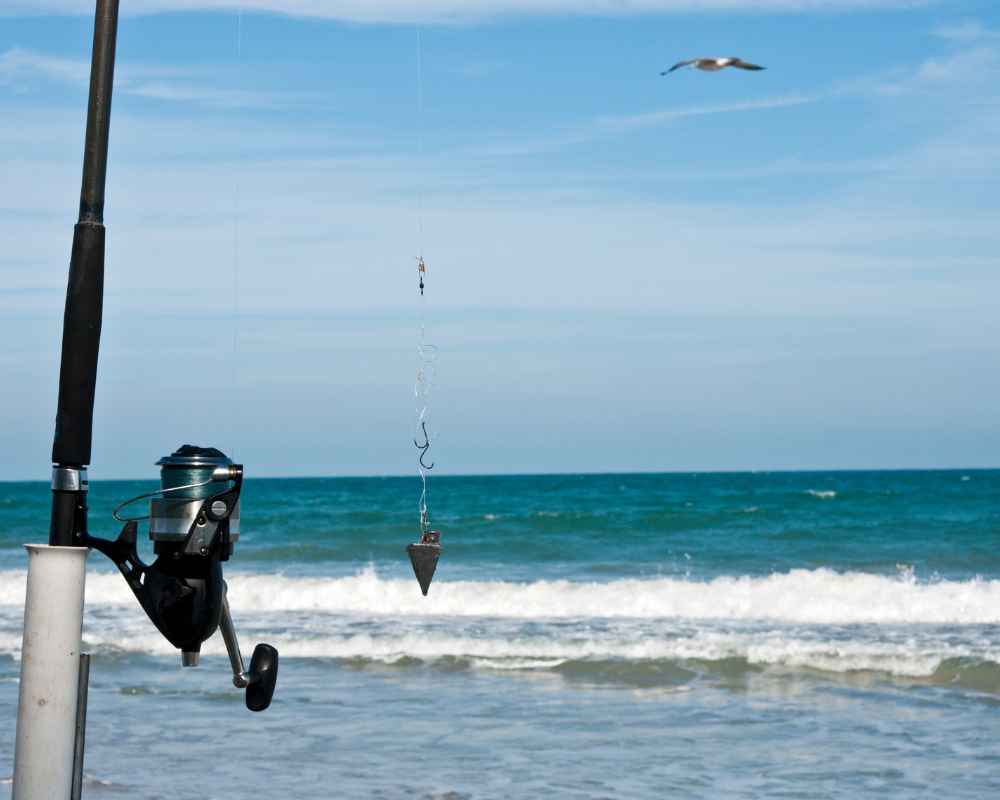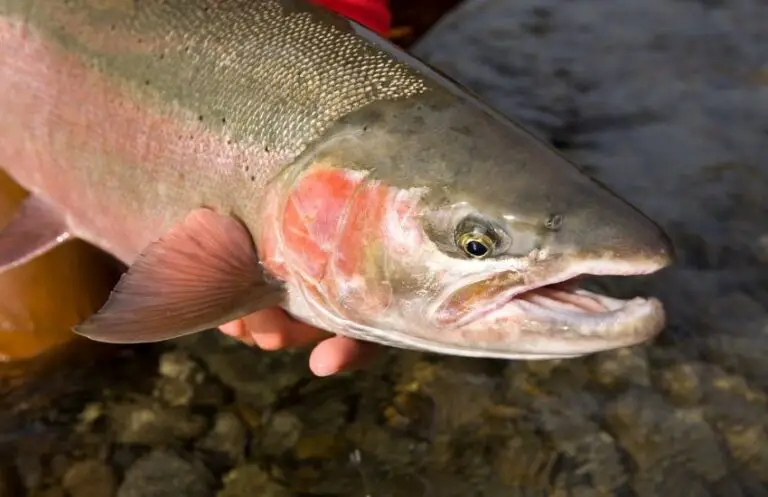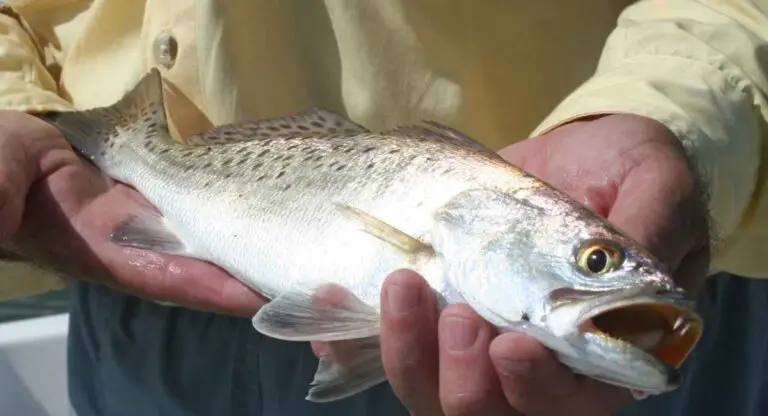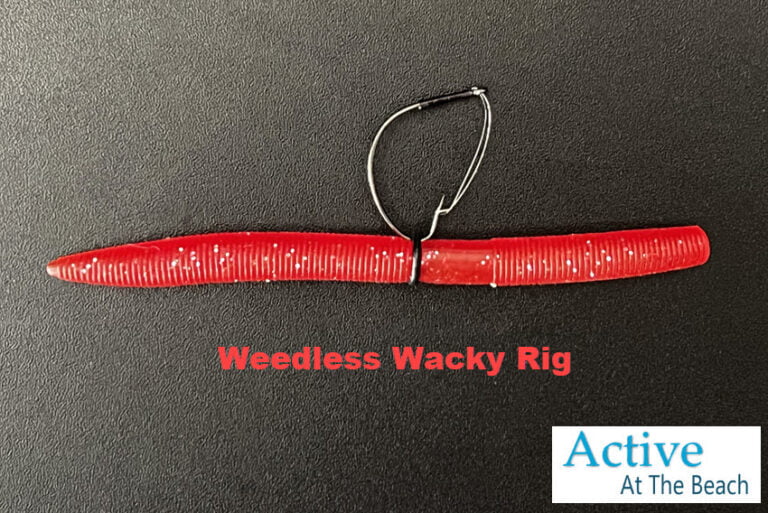Mastering The High Low Rig: How To Build And Fishing Tips And Techniques
Estimated reading time: 13 minutes
When it comes to fishing in the surf, one rig that I always rely on is the high low rig. What I love about this rig is its versatility, making it perfect for different fishing situations. It’s a favorite among anglers, especially for surf fishing, because it’s easy to use and can catch a variety of fish.
With the high low rig, you can target sheepshead, snapper, weakfish, and many other saltwater species. It works well in any saltwater environment, so you can use it wherever you go.
In this guide, I’ll walk you through everything you need to know about the high low rig. I’ll show you how to tie the knots and share valuable tips for surf fishing using this rig. Don’t miss the awesome feature videos below that demonstrate knot tying and provide helpful tips for using the high low rig in the surf. Get ready to improve your surf fishing skills!
High Low Rig Basics
Components
When I make a high low rig, I typically use the following components:
- Hooks: I use two hooks, usually circle or J hooks, depending on the target species.
- Sinker or weight: A sinker helps keep the rig steady in the water column, and the weight will vary depending on the current and depth.
- Swivel: A swivel helps connect the mainline to the leader, reducing line twists.
- Float: A float can be added to create separation between the two hooks, and it helps to lift the bait off the bottom.
- Leader: Leader material can be monofilament, fluorocarbon, or braid, depending on preference and target species. I typically choose a length between 12 and 24 inches.
- Knots: I use various knots to attach the hooks, weight, and swivel to the leader.
Types of High Low Rigs
Over the years, I’ve experimented with different variations of the high low rig, each tailored to specific fishing scenarios. Let me share some of these variations with you, so you can choose the right rig for your fishing needs:
- Basic High Low Rig: The most commonly used version, featuring two hooks attached to the leader and a weight at the bottom. I prefer using dropper loops to attach the hooks.
- Float High Low Rig: This variation incorporates a float positioned between the two hooks. It’s excellent for creating separation and enhancing visibility.
- Sliding High Low Rig: Designed with a sliding weight, this rig enables me to adjust the distance between the hooks and the sinker. It proves handy when fishing in areas with strong currents or varying depths.
Advantages and Disadvantages
Just like any other rig, the high low rig comes with its own set of advantages and disadvantages:
Advantages:
- Increased Catch Potential: With two hooks, the high low rig doubles the chances of hooking a fish and allows for testing different baits simultaneously.
- Adaptability: This rig can be easily adjusted to target specific species and adapt to varying fishing conditions.
- Easy Casting: The high low rig is simple to cast and performs well in different environments, including surf and bottom fishing.
Disadvantages:
- Time-Consuming Setup: Tying the rig can be time-consuming, and it may take some practice to master the process.
- Tendency to Tangle: Using excessive weight or an overly long leader can lead to tangling issues, requiring careful attention when rigging.
- Complete Replacement: Breaking off one component of the rig often means re-tying and replacing the entire setup.
Try experimenting with different variations of the high low rig to discover the one that best suits you best.
Assembling the High Low Rig
Tying Knots and Swivels
When I assemble a high low rig, the first thing I do is tie knots and attach swivels. I like to use the T-knot to connect a barrel swivel to the main fishing line. To tie the T-knot, follow these steps:
- Fold the fishing line to create a loop.
- Pass the loop through the eye of the barrel swivel.
- Wrap the loop around the mainline 4-5 times.
- Pull the loop tight, securing the swivel to the mainline.
Once I’ve tied the T-knot and attached the barrel swivel, I can start adding hooks and sinkers to the rig
Check out this awesome video from Hey Skipper on how to tie a dropper loop knot for a high low rig, where you’ll learn three different versions for every skill level, all proven to be super effective and personally used by me!
Attaching Hooks and Sinkers
I attach two hooks for a high low rig: one higher up on the line and one lower down. Here’s how I do it:
- Start by tying a loop about 3-4 inches long on the mainline (above the swivel). This can be done by making a loop and tying 4-5 overhand knots.
- Pass the top hook through the loop and pull it tight, securing it in place.
- Tie another loop about 12-18 inches below the first loop, following the same steps.
- Pass the lower hook through the second loop and pull tight.
Now it’s time to add the sinker. Attach a clip swivel to the barrel swivel and then clip your preferred weight to the clip swivel. This makes it easy to change sinkers if needed.
Adding Baits and Lures
With everything in place, adding baits and lures is the final step. Here’s how I do it:
- High hook: I like to use a live shrimp or a piece of cut bait here. Hook the bait through the head or the thickest part so it stays secure.
- Low hook: For the lower hook, I usually opt for a soft plastic lure or a small fish to attract larger predators.
And that’s it! My high low rig is complete and ready for fishing.
Target Species
When I’m using a high low rig, there are quite a few fish species which are my favorite targets. This rig is incredibly adjustable and it can be used to catch a variety of fish, including:
- Striped bass
- Flounder
- Sheepshead
- Bluefish
- Pompano
- Trout
- Black sea bass
- Scup
- Tautog
- Sharks
- Red drum
- Black drum
Starting off with stripers and black sea bass, I find that a high low rig is particularly productive either early or late in the season. The key here is to choose the right hook size for the specific fish I’m targeting. When I’m after stripers, I prefer using a 5/0 Eagle Claw Baitholder Circle Hook with clams or worms as bait.
I like using the high low rig for flounder, sheepshead, and tautog because it keeps my bait off the bottom, reducing the chances of getting snagged. Also, it allows me to present my bait at different depths, which increases my chances of attracting these fish.
When I’m targeting bluefish, pompano, and trout, I’ll often make small adjustments to my rig to suit the particular species. For example, I like using a lighter leader for pompano and trout so that the bait appears more natural in the water. And when targeting bluefish, I make sure to use a heavier leader as they have sharp teeth that can easily cut through lighter lines.
Sharks, red drum, and black drum are also potential targets when using the high low rig. For these larger and more aggressive fish, I often use a thicker and more abrasion-resistant leader material, and sometimes even wire, to prevent break-offs due to the power and sharp teeth of these fish.
In general, the high low rig offers a great opportunity for me to catch various species simply by adjusting the hook size, bait, or leader material to the fish I’m targeting. It’s definitely one of my go-to rigs when I’m out on the water.
Choosing and Presenting Baits
Natural Baits
When it comes to selecting the best natural baits for my high low rig, I try to keep a few key factors in mind. Firstly, it’s important to consider the target species’ diet and feeding habits. Some of my go-to natural baits for bottom-dwelling species include:
- Crabs: Blue crabs or fiddler crabs work well for sheepshead, black drum, and tautog.
- Squid: I find that strips of squid are effective for attracting fluke and sea bass.
- Shrimp: These tasty morsels can tempt a variety of species, such as redfish, snapper, and grouper.
- Worms: Sea worms or bloodworms are great for catching whiting, croaker, and perch.
- Clams: I’ve had success using fresh or preserved clam meat for catching stripers, drum, and porgies.
- Mullet: Finger mullet or cut mullet strips can be irresistible to predatory species like bluefish and mackerel.
When presenting these natural baits on my high low rig, I make sure to thread each bait carefully onto the hook to ensure a solid and natural presentation. I usually keep the baits at different heights on the rig to cover more water column and increase my chances of enticing a bite.
Artificial Baits
Although natural baits tend to produce more bites, there are times when I turn to artificial baits for my high low rig. These synthetic alternatives can be advantageous because they’re durable, consistently available, and often more convenient to use. Here are some types of artificial baits that I’ve found successful when targeting various bottom-dwelling species:
- Soft plastics: I like to use soft plastic lures such as curly tail grubs, paddle tail swimbaits, and shrimp imitations. These all-around baits can mimic a range of prey species and are easy to rig on the high low rig’s hooks.
- Artificial worms: Synthetic sea worms or bloodworm imitations are a useful alternative when live worms are unavailable. These can be cut to size and threaded onto the hook like a natural worm.
- Scented baits: Some artificial baits, such as Gulp! products, are impregnated with attractant scents that can encourage fish to bite even when natural baits aren’t working.
When using artificial baits on my high low rig, I’m mindful of maintaining a realistic and enticing presentation. I frequently experiment with different baits, colors, and techniques to find the right combination that triggers a strike.
High Low Rig Tips and Techniques
Surf Fishing with High Low Rigs
I find that high low rigs work great for surf fishing because they allow me to present two different baits at different depths in the water column. It helps me increase my chances of catching fish by maximizing my casting distance and range. When I surf fish with this rig, I prefer to use a bank sinker (sometimes pyramid sinker), as its shape helps it hold in the sand without getting caught.
Bottom Fishing Tips
For bottom fishing, using a high low rig is essential because it lets me test different baits at various depths. Trying two baits simultaneously, like shrimp and fiddler crabs, helps me discover what the fish are eating at that moment. Remember to keep the weight below the hooks when setting up this rig for bottom fishing, it will keep your bait off the sea floor, reducing the risk of getting snagged on rocks or debris.
Detecting Bites
When using a high low rig, detecting bites can be a little different than with other types of rigs. I always pay close attention to my rod tip, and look for it to bend, twitch or bounce as fish bite the bait. I found it helpful to keep my line somewhat tight, but not too tight, as it can lead to missed hooksets if the fish feels resistance.
Setting the Hook
Setting the hook with a high low rig is crucial, as it separates the amateurs from the pros. When I feel a fish biting on my bait, I don’t immediately set the hook. Instead, I wait a few seconds to ensure the fish has fully taken my bait, then I reel in the slack line and set the hook with a firm but smooth upward motion.
By following these tips and techniques, my success rate using high low rigs for both surf fishing and bottom fishing has significantly improved.
Hey Skipper has got you covered with this video on the high low rig, where they show you some simple tips for catching more fish while beach fishing in saltwater.
Other Fishing Rigs to Consider
In addition to the high low rig, I have come across some other helpful fishing rigs that can help maximize your catch. One of those is the fish-finder rig, which is pretty popular amongst anglers. Let me tell you a bit about it and how it can benefit you.
The fish-finder rig derives its name from the ability to “find” fish as it allows the bait to move freely with the water’s current, giving off a more natural presentation. This rig uses a sliding sinker, a leader, and a hook. It’s quite adaptable and can be used in various fishing situations like surf fishing, bottom fishing, and even trolling. The fish finder rig works well when targeting species like redfish, striped bass, and flounder.
On the other hand, if you want to try something different from the high low rig, you might consider using the following rigs:
- Carolina rig: A saltwater fishing favorite, the Carolina rig consists of a sliding sinker, bead, swivel, leader, and hook. It’s ideal for fishing in areas with lots of debris or cover and works well for catching fish like redfish and flounder.
- Popping cork rig: Another popular saltwater rig is the popping cork rig. It’s made up of a cork, weight, swivel, leader, and hook, and is great for attracting fish like speckled trout and redfish. The cork creates a popping sound that attracts fish and can be fished in shallow or deep water.
- Jigging rig: Jigging rigs are versatile and can be used for many different types of saltwater fishing. They consist of a jig head, hook, and soft plastic bait, and are used to imitate different types of prey. They’re great for catching fish like snook, tarpon, and grouper.
- Texas rig: The Texas rig is a classic saltwater rig that’s great for fishing in areas with weeds and other vegetation. It consists of a worm hook, weight, and soft plastic bait, and can be used to catch fish like redfish and flounder.
- Float rig: A float rig, also known as a bobber rig, is perfect for fishing in shallow or still water. It consists of a float, weight, leader, and hook, and can be used to catch fish like trout, redfish, and snook. The float keeps the bait at a specific depth, making it easier to attract fish.
Before heading out on the water, it’s helpful to know different fishing rigs like the fish-finder rig, Carolina rig, drop shot rig, and slip bobber rig. Understanding their functionality will allow you to adapt to different fishing situations and target various species more effectively. So, experiment and find the rig that works best for you.
Conclusion
I’ve found that using a High Low Rig is an excellent way to increase my chances of catching fish when I’m out on the water. With two hooks, I can test different baits and target multiple species at once, making my fish hookups more productive.
In my experience, a High Low Rig works great for sheepshead and snapper, as well as other bottom-dwelling fish like weakfish. I like to vary the baits I use to see which ones the fish are most attracted to, often combining shrimp with fiddler crabs or other types of bait.
The key to success with the High Low Rig is proper setup and presentation. I make sure my sinker sits on the bottom with the hooks suspending my baits between 12 and 24 inches above it. This arrangement helps keep my offerings in the right part of the water column and allows the baits to move more naturally, attracting more fish.
One tip I’ve picked up is using circle hooks when constructing my High Low Rig. They provide better hooksets and are less likely to damage the fish, making catch and release a more viable option.
Overall, I’m a big fan of the High Low Rig, and I encourage anglers to give it a try. With some practice and the right setup, you may find it to be one of your go-to methods for targeting a variety of fish species.








